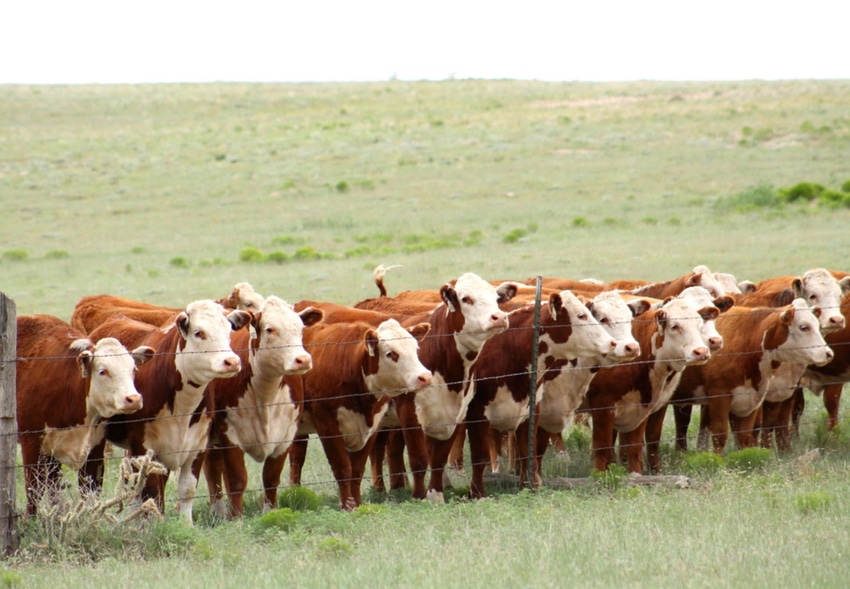Beef consumers, direct customers and financial partners want to know how beef cattle production contributes to environmental sustainability.
"Sustainability is not a nice-to-have anymore; it’s a need-to-have," says Kim Stackhouse-Lawson, Ph.D., director of Colorado State University’s (CSU) AgNext, a research collaborative developing sustainable solutions for agriculture. "Yes, producers have been here for generations, but today we have to say, ‘We’ve been here for generations and here’s how we continue to improve and continue to care.’ The proof points in today’s society are expected, whether
that’s fair or not."
Stackhouse-Lawson explains most of the pressure on U.S. cattle and beef currently comes from concerns about climate change, specifically the level of greenhouse gas (GHG) produced by the industry.
"We know cattle are natural up-cyclers. We also know how much more efficient U.S. beef production has become over time in terms of producing more beef with fewer cows on less land.
The American cattle producer is the most efficient in the world," says Jack Ward, executive vice president of the American Hereford Association (AHA). "But we also know the global population is expected to grow by almost 2 billion by 2050. So, how do we become more efficient and how do we, from a genetic standpoint, affect overall sustainability?"
All the above are behind a cooperative AHA-CSU research project.
Identifying genetics associated with GHG
"The primary objective of this research is to give the American Hereford Association, its breeders and their customers tools that will help improve the environmental footprint of beef production," says Mark Enns, Ph.D., a beef cattle geneticist at CSU and a member of the research team.
Research will leverage decades of phenotypes for individual feed intake collected by AHA members, as well as previous feed efficiency research conducted by the Association.
"Over time, we’ve documented the value of Hereford genetics in commercial cow herds in terms of fertility, longevity, feed efficiency and other traits associated with production efficiency," Ward says. "All of those things, as we understand currently, are going to have a positive effect in terms of sustainability as we move forward in the industry.
"At the same time, producers have long known the economic value of production efficiency. Things like getting more cows bred early, more pounds of calf weaned per cow exposed and less feed required per unit of output — all of those make a huge difference to the bottom line."
Specifically, AHA-CSU research aims to enhance understanding of the genetic differences in seedstock relative to enteric methane production and nitrogen excretion, a byproduct of rumen fermentation.
Stackhouse-Lawson explains the amount of feed cattle consume is a true indicator of the
amount of greenhouse gas they will emit.
Methane emission, as a genetic trait in cattle, appears to be moderately heritable with genetic correlations (modest to strong) to economically relevant production traits, such as measures of growth, dry matter intake and various estimates of feed efficiency.
Previous research also suggests genetics play a significant role in nitrogen excretion by cattle. It and the animal’s environmental footprint can be reduced through selection.
Extending social license
"This is going to help us maintain the license to operate. I think that is a key term we
all need to understand," says Craig Huffhines, director of equine sciences and elite
bovine and equine genetics at CSU. "What is our license to operate? What is society going to allow us to do to stay in business and feed a growing population?"
Beyond providing customers, consumers and financial partners with data verifying the environmental sustainability of beef cattle production — doing the right thing — Stackhouse-Lawson notes there could also be financial rewards.
"If we get this right and can measure a (GHG) reduction, you could get paid for it because we’ve seen big companies make commitments around net-zero goals, and there will be expectations
those companies make progress toward the goals," Stackhouse- Lawson explains. "They’re going to have to incentivize the adoption of practices that reduce greenhouse gas emissions."
These comments and information stem from an online webinar AHA hosted July 12. Viewers from the U.S. and five other countries participated in the event.
To watch webinar, visit https://hereford.ac-page.com/csuwebinarrecording
Source:The American Hereford Association, which is solely responsible for the information provided and is wholly owned by the source. Informa Business Media and all its subsidiaries are not responsible for any of the content contained in this information asset.




